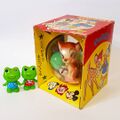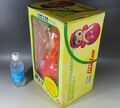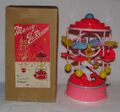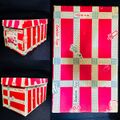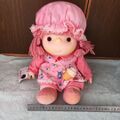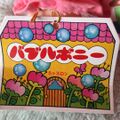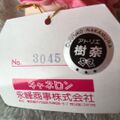Difference between revisions of "Canelon Toys"
From Sega Retro
m (→Old toys) |
m (→History: references coming soon... I love you all...) |
||
| Line 14: | Line 14: | ||
==History== | ==History== | ||
| − | The company was | + | The history of the company can be traced back to 1894, when Japanese entrepeneur and pionner of the celluloid industry Sheijiro Nagamine (永峰清次郎) manufactured the first celluloid toys in the history of Japan, produced in his workshop called Nagamine Sheijiro Shoten (永峰清次郎商店, '''lit.''' Sheijiro Nagamine Store. |
| + | |||
| + | Three years after in 1897, [https://ja.wikipedia.org/wiki/%E5%9D%AA%E4%BA%95%E7%8E%84%E9%81%93 Gendō Tsuboi] (坪井玄道) introduced in Japan the first table tennis ball and in the next year in 1898 production of table tennis balls begins at Sheijiro Nagamine's workshop which had just began exporting celluloid blow-up balls in that year. | ||
| + | |||
| + | In 1911 Sheijiro Nagamine invents the blow molding method of manufacturing dolls, which he patented in 1913 and in 1915 Nagamine's celluloid dolls manufactured with this method were ehxibited for the first time outside Japan at the [[wikipedia:Panama–Pacific International Exposition|Panama–Pacific International Exposition]] held in San Francisco. | ||
| + | |||
| + | The demand for Japanese toys increased due to the outbreak of World War I a year before in 1914 and in 1918, with three large manufacturing plants in the Tokyo region, Sheijiro Nagamine changed the name of the company to Nagamine Celluloid Co. Ltd. (永峰セルロイド株式会社, Nagamine Seruroido Kabushiki Gaisha) also known as Nagamine Chemical Industry Co., Ltd. (株式会社永峰化成工業, Kabushiki Gaisha Nagamine Kasei Kogyo). Export value of celluloid toys exceeded 350 million yen in that year but after only two years after in 1920, demand decreased substantially and orders plummeted to less than one quarter. | ||
| + | |||
| + | In 1924 economy recovered and both exports and domestic consumption increased and three years after in 1927 the production volume was the largest since the begining of the industry. This however caused a series of business difficulties with the major of them being a drop in prices. | ||
| + | |||
| + | The Japanese industry of celluloid enjoyed a decade of prosperity during the 1930s with a record of billions in production and with an export value of 20 million yen in 1935, supplanted only by a 42 million yen export value in 1937. | ||
| + | |||
| + | However in 1940 after Europe banned imports of Japanese toys due the start of World War II, the company ceased opperations until 1945, when despite the catastrophic impact, it managed to resume production at the end of the war. | ||
| + | |||
| + | On July 18, 1949 Nagamine Celluloid Co. Ltd. (永峰セルロイド株式会社) amalgamated Tokyo-based trading company, Nagamine Shoji Co. Ltd{{fileref|Commercial Import Detentions Report 1971-1972 (United States Department of Health, Education and Welfare; Food and Drug Administration).pdf|page=379}} (永峰商事株式会社{{fileref|Canelon JP PrintAdvert.jpg}}), adopting the name of the amalgamated company, becoming famous in the 1960s and 1970s for its line of celluloid toys and dolls and mechanical tin toys (''Roly Poly'', [https://www.youtube.com/watch?v=-LTMWAs5MF4 ''Elephant Merry-Go-Round''], etc) which were sold in Japan and abroad under the brand{{fileref|Agriculture Environmental and Consumer Protection for Fiscal Year 1972 (United States Senate; Committee on Appropriations).pdf|page=150}}{{fileref|ConsumerNews US Volumes 1-3 (United States Office of Consumer Affairs).pdf|page=67}} name ''"Canelon"''. | ||
Sometime after, the company changed its name to Canelon Co. Ltd. (named after its well known brand of toys), producing mostly toys for babies, including several from the [[wikipedia:Miffy|Miffy]] series of toys for children, sold by [[Sega Toys]] in Japan, like the [[Busy Gym]]. | Sometime after, the company changed its name to Canelon Co. Ltd. (named after its well known brand of toys), producing mostly toys for babies, including several from the [[wikipedia:Miffy|Miffy]] series of toys for children, sold by [[Sega Toys]] in Japan, like the [[Busy Gym]]. | ||
Revision as of 09:50, 15 February 2020

| ||
| Canelon Toys | ||
|---|---|---|
| Founded: 1960-04[1] | ||
| Merged with: Maruzen Co. Ltd (株式会社丸善) | ||
Headquarters:
|
This teeny-tiny article needs some work. You can help us by expanding it.
Canelon Toys (株式会社キャネロン, Kabushiki Gaisha Kyaneron), currently Canelon Chemicals Co. Ltd[2] (キャネロン化工株式会社, Kyaneron Kakō Kabushiki Gaisha), a division of Maruzen Co. Ltd[3] (株式会社丸善, Kabushiki Gaisha Maruzen), is a plastic products[4] manufacturing company (plastic containers, trays, packaging and growing systems for the horticultural and food industries) and former toy manufacturer[5][6][7][8] based in Honjō, Japan.
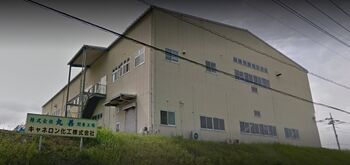
History
The history of the company can be traced back to 1894, when Japanese entrepeneur and pionner of the celluloid industry Sheijiro Nagamine (永峰清次郎) manufactured the first celluloid toys in the history of Japan, produced in his workshop called Nagamine Sheijiro Shoten (永峰清次郎商店, lit. Sheijiro Nagamine Store.
Three years after in 1897, Gendō Tsuboi (坪井玄道) introduced in Japan the first table tennis ball and in the next year in 1898 production of table tennis balls begins at Sheijiro Nagamine's workshop which had just began exporting celluloid blow-up balls in that year.
In 1911 Sheijiro Nagamine invents the blow molding method of manufacturing dolls, which he patented in 1913 and in 1915 Nagamine's celluloid dolls manufactured with this method were ehxibited for the first time outside Japan at the Panama–Pacific International Exposition held in San Francisco.
The demand for Japanese toys increased due to the outbreak of World War I a year before in 1914 and in 1918, with three large manufacturing plants in the Tokyo region, Sheijiro Nagamine changed the name of the company to Nagamine Celluloid Co. Ltd. (永峰セルロイド株式会社, Nagamine Seruroido Kabushiki Gaisha) also known as Nagamine Chemical Industry Co., Ltd. (株式会社永峰化成工業, Kabushiki Gaisha Nagamine Kasei Kogyo). Export value of celluloid toys exceeded 350 million yen in that year but after only two years after in 1920, demand decreased substantially and orders plummeted to less than one quarter.
In 1924 economy recovered and both exports and domestic consumption increased and three years after in 1927 the production volume was the largest since the begining of the industry. This however caused a series of business difficulties with the major of them being a drop in prices.
The Japanese industry of celluloid enjoyed a decade of prosperity during the 1930s with a record of billions in production and with an export value of 20 million yen in 1935, supplanted only by a 42 million yen export value in 1937.
However in 1940 after Europe banned imports of Japanese toys due the start of World War II, the company ceased opperations until 1945, when despite the catastrophic impact, it managed to resume production at the end of the war.
On July 18, 1949 Nagamine Celluloid Co. Ltd. (永峰セルロイド株式会社) amalgamated Tokyo-based trading company, Nagamine Shoji Co. Ltd[9] (永峰商事株式会社[10]), adopting the name of the amalgamated company, becoming famous in the 1960s and 1970s for its line of celluloid toys and dolls and mechanical tin toys (Roly Poly, Elephant Merry-Go-Round, etc) which were sold in Japan and abroad under the brand[11][12] name "Canelon".
Sometime after, the company changed its name to Canelon Co. Ltd. (named after its well known brand of toys), producing mostly toys for babies, including several from the Miffy series of toys for children, sold by Sega Toys in Japan, like the Busy Gym.
In 2002 the company was acquired by Maruzen Co. Ltd (株式会社丸善) which had been investing capital in the company since 1989, becoming Canelon Chemicals Co. Ltd. (キャネロン化工株式会社).
Photo gallery
A pair of Sudare (window blinds) manufactured by the company
Old toys
External links
- Info about Maruzen Co, Ltd and its two subsidiary companies, E-Half Co, Ltd and Canelon Co, Ltd at www.foomajapan.jp
- www.maruzen.net/canelon/
- www.maruzen.net
- www.e-half.co.jp
References
- ↑ http://www.maruzen.net/canelon/guide.html
- ↑ http://www.maruzen.net/canelon/index.html
- ↑ http://www.maruzen.net/index.html
- ↑ https://archive.fo/3PqVZ/da23d02a759ca3fc58eff4f28ce4c8f96b00fe61
- ↑ File:CanelonToys Box.jpg
- ↑ File:CanelonToys Doll.jpg
- ↑ File:CanelonToys Baby Toy.jpg
- ↑ File:CanelonToys Piano.jpg
- ↑ File:Commercial Import Detentions Report 1971-1972 (United States Department of Health, Education and Welfare; Food and Drug Administration).pdf, page 379
- ↑ File:Canelon JP PrintAdvert.jpg
- ↑ File:Agriculture Environmental and Consumer Protection for Fiscal Year 1972 (United States Senate; Committee on Appropriations).pdf, page 150
- ↑ File:ConsumerNews US Volumes 1-3 (United States Office of Consumer Affairs).pdf, page 67
- ↑ http://archive.fo/zo1cc








